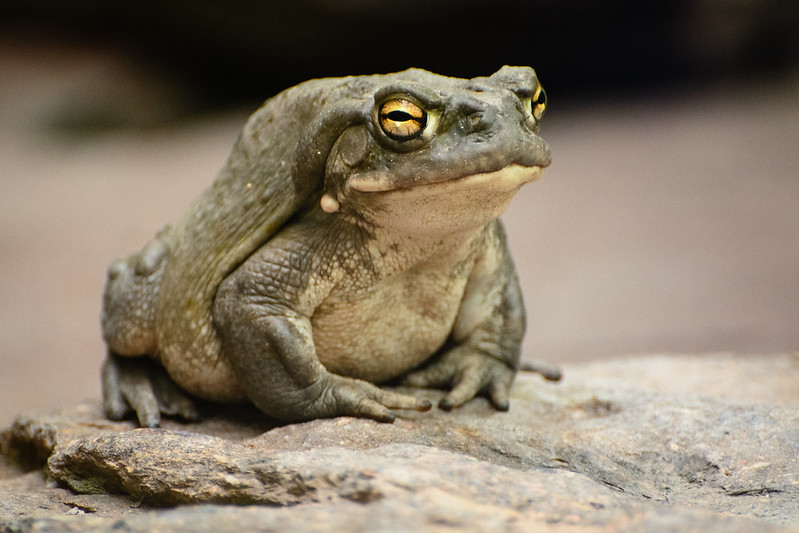Meet Arizona’s Coolest Creature: The Colorado River Toad

Don’t lick the Colorado River toad
The National Parks Service recently warned visitors not to lick toads, in the wake of a growing number of reports of people becoming ill after doing so. The toads in question are the Colorado River toads, formerly known as Sonoran desert toads, which are found in the southwestern United States, particularly in Arizona. You should follow this advice and refrain from licking them. You’re highly unlikely to derive any benefit from doing so, and it’s unfair to the toads, who can’t consent.
Wait. Why did this come up?
The Colorado River toad, a/k/a the Sonoran desert toad, a/k/a bufo alvarius, defends itself from its natural predators by secreting venom through glands on the sides of its neck. This poison can kill good-sized dogs, and, when properly prepared, it can also get humans extremely high. Higher than Hendrix, it’s said.
The toads produce 5-MeO-DMT, which is also found in some plants, has been used in shamanic rituals for centuries, and is referred to as “the Mount Everest of psychedelics.” But if you’re not ready for that—and, even if you think you are, you might not be—there are a lot of other reasons to love and respect these cool characters.
What is the Colorado River toad, and why does it rule so hard?
The Colorado River toad is the largest toad in North America and can grow to be up to eight inches long. It’s got a lot of swagger, maybe because it sleeps for ten months out of the year. Owing to the growing interest in its venom, it’s also at risk of becoming endangered. It’s a cool creature and a key part of our ecosystem that deserves admiration and support, or to be left alone if that’s what it wants.
What are the characteristics of the Colorado River toad?
The Colorado River toad is brown or olive-colored, with large, bumpy warts on its skin. It has large, webbed feet, which help it to swim and climb. And it has an expression that says, “I’ve seen it all and I’m unimpressed with your BS.”
Fun facts about the Colorado River toad
The Sonoran desert toad can live for up to 20 years. It is nocturnal and spends the day hiding in burrows or under rocks. It is an excellent swimmer and can stay submerged for up to half an hour. Because it sleeps for ten months a year, it may consider its dreams the “real world” and its waking life to be an illusion. If it learns to speak English—which wouldn’t be the coolest thing it’s ever done—maybe we can ask.
Why is the Colorado River toad important?
The Colorado River toad is an important member of our community because it is a keystone species in its ecosystem. It is also a source of food for many predators, including snakes, lizards, and birds of prey.
What threats does the Colorado River toad face?
The Colorado River toad is going through a weird time in its history. It faces many threats, including habitat loss, climate change, and predation. It is also hunted by humans for its venom, often carelessly, which is a mounting threat to its numbers. Allies of the toad have helped create synthetic 5-MeO-DMT in laboratories with good results, or so we’ve been told. Consider that instead before you invite the sort of wretched karma that comes from disturbing such a cool animal when it’s just trying to mind its own business.
Bufo alvarius is a fascinating creature that is facing many threats. It is important to be aware of the dangers of licking toads, and to protect this species so that it can continue to play a vital role in its ecosystem. The night is young, and these toads still have much to teach us.

